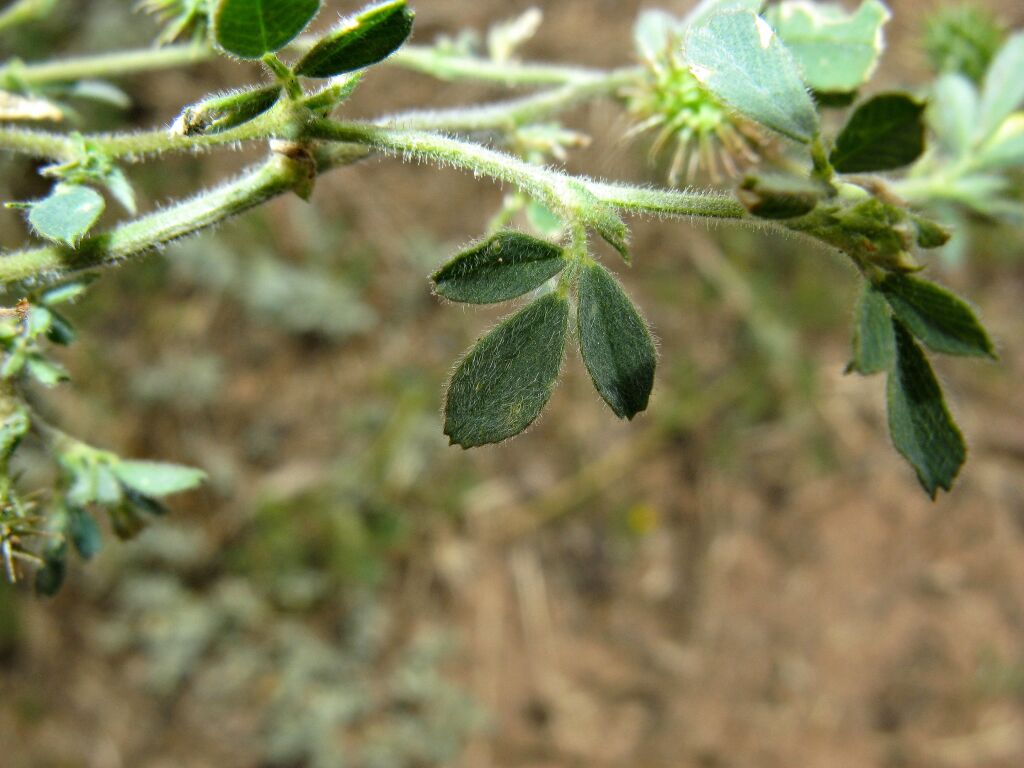Medicago minima
(L.) Bartal. Little MedicProstrate or ascending annual herb; stems mostly 20–60 cm long, moderately hairy; hairs mixed simple and glandular. Leaflets obovate, 3–15 mm long, 2–10 mm wide, minutely dentate towards apex, both surfaces appressed-hairy, upper surface sometimes with darker flecks, apex rounded or retuse with a terminal tooth; stipules to c. 8 mm long, entire or minutely dentate, both surfaces hairy. Inflorescence 1–8-flowered; peduncle 0.5–2 cm long, shorter or longer than subtending petiole. Pedicels to c. 1 mm long; calyx 2.5–4 mm long, teeth equal to or shorter than tube; corolla yellow; standard 3.5–5 mm long; wings shorter than keel. Pod with 3–5 coils, discoid or ovoid, 2–5 mm long, 3–6 mm diam., sparsely hairy, spiny; coil thin-walled, edge thin; face with 6–8 curved veins; veins not anastomosing; marginal vein raised above level of submarginal veins; grooves broad; spines 8–16 on each side of coil, 0–4 mm long; seeds 3–7, to c. 2.5 mm long, yellow-brown. Flowers Jul.–Jan.
LoM, MuM, Wim, Brid, VVP, VRiv, MSB, RobP, MuF, GipP, OtP, WaP, Gold, CVU, GGr, NIS, EGL, EGU, WPro, HSF, HNF. Naturalized all States. Native to Europe, northern Africa, the Middle East. Scattered mostly across northern and western Victoria on a variety of soils, in pastures, disturbed ground and along watercourses and road verges.
As with M. truncatula, the varieties of Heyn (1963) are rejected by Lesins & Lesins (1979). The Australian material is very variable and displays a wide range of pod shape and spine length.
Jeanes, J.A. (1996). Fabaceae. In: Walsh, N.G.; Entwisle, T.J., Flora of Victoria Vol. 3, Dicotyledons Winteraceae to Myrtaceae, pp. 663–829. Inkata Press, Melbourne.
 Spinning
Spinning



